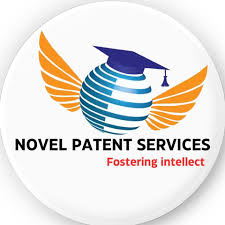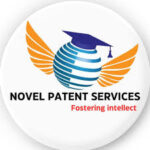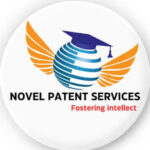Patent Drawing Services
Patent drawing services, we provide accurate drawings for your patent applications. We ensure compliance, use specialized software, and have mutual collaboration.
Costs and timelines vary. We are an experienced Patent service provider and consult us for legal guidance.
Patent drawing services are crucial for USPTO (United States Patent and Trademark Office) applications.
Patent drawings play a vital role in the patent application process.
When filing a patent application with the USPTO, it is essential to provide accurate and detailed drawings that comply with USPTO specific guidelines and standards.
The USPTO has specific requirements for patent drawings in terms of size, format, labeling, clarity, and drawing techniques.
These guidelines aim to ensure that the drawings effectively convey the invention’s structure, design, and functionality.
It is crucial to adhere to these guidelines to avoid potential issues, such as rejection or delays in the application process.
Benefits of choosing us as your Patent Attorney
- Improve the chances of patent success by working around existing inventions
- You can gain confidence in the patentability of your invention
- Defend your patent
- We will analyze patent results whether your invention is patentable
- We have 18 years experience in filing a patent applications and can save you time
DIFFERENT TYPES OF PATENT DRAWINGS.…
There are several different types of Patent drawings that a patent applicant may submit to the United States Patent and Trademark Office (USPTO). Some common types of Patent drawings are
Utility Drawings
These drawings show how an invention is built and how it works. They display the different parts and every aspect, how they fit together, and how they relate to each other. Utility drawings are used for inventions like machines or electronics.
Design Drawings
These drawings are mainly focused on how an invention looks. It shows his unique appearance or shape. Design drawings are used for inventions related to things like product design, fashion, or graphical user interfaces (GUI).
Graphs and Charts
Graphs and charts are used to present data or results related to an invention. They use visual representations, like lines and bars, to show trends, comparisons, or relationships. Graphs and charts are often used for inventions in scientific, engineering, or analytical fields.
Note:
- Without professional training, your drawings may lack quality and accuracy.
- Meeting patent office guidelines without professional guidance can be difficult.
- Drawing takes time away from developing your invention.
- Inaccurate drawings may weaken your patent’s protection and enforceability.
- Professional perceptions: Self-drawn drawings may not be viewed as reliable as professionally prepared ones.
It is always advisable to consult us for professional patent drawing services. We are experts to create accurate and high-quality drawings that effectively represent your invention while ensuring compliance with the patent office’s requirements.
CAN I DRAW MY PATENT DRAWINGS MYSELF
Patent drawings the applicant or inventor provides are accepted by the United States Patent and Trademark Office (USPTO). It is important to note, however, that the drawings must meet certain requirements to be accepted.
Guidelines to keep in mind if you choose to draw your patent drawings:-
- The drawings must portray the invention accurately, including all of its features, components, and connections.
- The drawings should be clear and simple to follow. They should use proper shading, lines, and symbols to show the invention.
- The drawings should be neat and free of swirls or over-erasures.
- The drawings should be created to scale, which means that the relative sizes and proportions of the various pieces should be accurate.
- If necessary, include multiple views of the invention to demonstrate it from various angles and perspectives. Front, side, top, bottom, and perspective views are all possible.
- Refer to different components or elements of the innovation using numbering or labeling. These annotations should be clear and correspond with the descriptions in the patent application.
- Check that the drawings correspond to the written description of the invention in the patent application.
Consulting with a patent attorney or agent can also provide valuable guidance and ensure that your patent application, including the drawings, is prepared and filed correctly.
RISKS OF RESPONDING TO MY OWN OFFICE ACTION RESPONSES MYSELF
Time and Effort
Creating patent illustrations might take time, especially if you need to learn technical drawing skills or purchase specialised software. This can take your focus and energy away from other critical areas of your patent application.
Professionalism
Patent drawings are an important aspect of your patent application and can influence how people see your idea. If your drawings are of low quality or lack professionalism, it may reflect badly on your application and reduce your chances of receiving a patent.
Quality and Compliance
Patent drawings must meet the patent office’s special standards, such as accuracy, clarity, and conformity to guidelines. If your designs fail to meet these requirements, they may be rejected, causing delays in the patent application process.
Complexity
Creating precise and comprehensive drawings can be difficult depending on the complexity of your idea. Without professional experience, it may be difficult to effectively represent your invention’s numerous features or different views.
Legal Requirements
Patent drawings must adhere to strict legal guidelines, such as proper labelling, numbering, and compliance with the written description. Understanding and complying to these standards can be difficult, and understanding of patent laws and regulations may be required.
Considering these risks, it may be advisable to consult with a professional patent illustrator or drafting service. They have the expertise to create high-quality drawings that meet the necessary requirements, saving you time and ensuring that your patent application is presented in the best possible manner. Additionally, working with a patent attorney or agent can provide further guidance and assistance throughout the entire patent application process.



